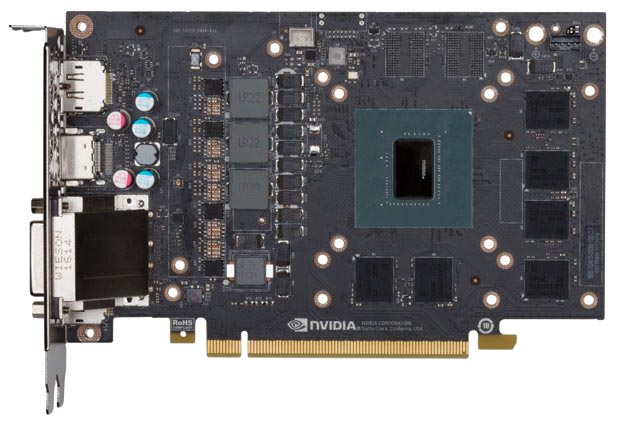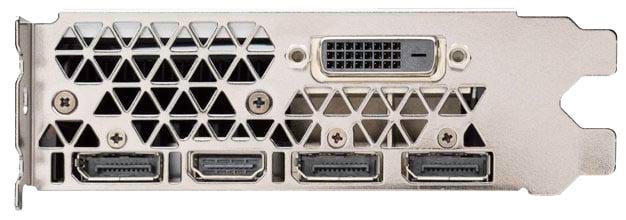NVIDIA GeForce GTX 1060 Review: Pascal Value And Performance Per Watt
Introducing The GeForce GTX 1060
A couple of weeks back, just in time to rain on AMD’s Radeon RX 480 parade, NVIDIA revealed a few details about the GeForce GTX 1060. We didn’t have actual performance numbers to share, but NVIDIA revealed GTX 1060 Founder’s Edition’s pricing, core count, clocks, memory configuration, TDP, and physical characteristics. They also claimed the card would offer performance in the same class as the GeForce GTX 980.
Considering the fact that the GP106 GPU at the heart of the GeForce GTX 1060 has roughly half of the resources of NVIDIA’s current flagship GeForce GTX 1080, and NVIDIA put the 1080 up against a pair of GTX 980s in SLI at its launch event, claiming the GTX 1060 would perform on par with a single GeForce GTX 980 wasn’t a shock. If you wanted to know exactly how the GeForce GTX 1060 performed, however, we didn’t have much meat to share. Until today, that is.
The NVIDIA GeForce GTX 1060 is officially launching today, and we’ve got the full scoop on the pages ahead. As you’ll see, this 120W, mainstream GPU punches well above its weight class, and offers a compelling mix of low-power and high-performance. Before we dig in though, we’ve got some specs and images to share...
Considering the fact that the GP106 GPU at the heart of the GeForce GTX 1060 has roughly half of the resources of NVIDIA’s current flagship GeForce GTX 1080, and NVIDIA put the 1080 up against a pair of GTX 980s in SLI at its launch event, claiming the GTX 1060 would perform on par with a single GeForce GTX 980 wasn’t a shock. If you wanted to know exactly how the GeForce GTX 1060 performed, however, we didn’t have much meat to share. Until today, that is.
The NVIDIA GeForce GTX 1060 is officially launching today, and we’ve got the full scoop on the pages ahead. As you’ll see, this 120W, mainstream GPU punches well above its weight class, and offers a compelling mix of low-power and high-performance. Before we dig in though, we’ve got some specs and images to share...
|
| NVIDIA GeForce GTX 1060 | ||
| Graphics Processing Clusters | 3 | |
| Streaming Multiprocessors | 10 | |
| CUDA Cores (single precision) | 1280 | |
| Texture Units | 80 | |
| ROP Units | 48 | |
| Base Clock | 1506MHz |
|
| Boost Clock | 1708MHz |
|
| Memory Clock (Data rate) | 4006MHz (Effective Speed - ~8Gbps) | |
| L2 Cache Size | 1536KB | |
| Total Video Memory | 6144 MB GDDR5 | |
| Memory Interface | 192-Bit |
|
| Total Memory Bandwidth | 192 GB/s |
|
| Texture Filtering Rate (Bilinear) | 120.5 GigaTexels/sec |
|
| Fabrication Process | 16 nm |
|
| Transistor Count | 4.4 Billion | |
| Connectors | 3 x Display Port 1 x Dual-Link DVI 1 x HDMI |
|
| Form Factor | Dual Slot |
|
| Power Connectors | One 6-Pin | |
| Recommended Power Supply | 400 Watts |
|
| Thermal Design Power (TDP) | 120 Watts |
|
| Thermal Threshold | 94°C |
|
| Price | $249 - $299 MSRP - Find Them At Amazon | |
Unlike the GeForce GTX 1080 and 1070, the GeForce GTX 1060 is not built around the Pascal-based GP104 GPU. The GeForce GTX 1060 features a new Pascal derivative, that’s somewhat smaller, dubbed the GP106. The GP106 is essentially a scaled-down version of the GP104 targeted at a more mainstream audience, but it supports all of the bleeding edge features of Pascal, like Simultaneous Multi-Projection (SMP), Ansel, Fast Sync, and enhanced memory compression, just like the flagship GTX 1080.
The GP106 is manufactured on TSMC’s 16nm FinFET process node. The GPU is comprised of roughly 4.4 billion transistors and has a die size measuring only 200mm2. That’s significantly smaller than the 398mm2 area of the Maxwell-based GM204 used on the GTX 980. It’s even smaller than the 227mm2 GeForce GTX 960, which can’t come close to matching the GTX 1060’s performance.
In its full implementation, the GP106 features 10 streaming multiprocessors (SM) with a total of 1280, single-precision CUDA cores, arranged in 2 graphics processing clusters (GPC). Each GPC includes a dedicated raster engine and five SMs with 128 CUDA cores, eight texture units, a shared memory unit, and some L1 cache. There is 1536KB of L2 cache on the chip, and a total of 80 texture units. Each SM is also outfitted with a PolyMorph Engine that handles vertex fetch, tessellation, viewport transformation, vertex attribute setup, and perspective correction. It's also in the PolyMorph Engine that a new unit enables Simultaneous Multi-Projection, like the GeForce GTX 1080.
The GeForce GTX 1060 also features six 32-bit memory controllers, for 192-bits in total. Linked to each 32-bit memory controller are eight ROPs, for a total of 48, and 128 KB of that aforementioned L2 cache. GeForce GTX 1060 cards with either 6GB or 3GB of GDDR5 memory will be available.
The GeForce GTX 1060 Founder’s Edition looks much like the GeForce GTX 1080 and 1070, but other than the architecture and design language, the cards are quite different. The GTX 1060 has a faceted fan-shroud with black and silver elements, and underneath the shroud are a radial fan and a relatively large dense array of aluminum heatsink fins. The fan pulls air in, blows it across the heatsink, and then vents the heated air outside the chassis. Note, however, that the fan doesn’t sit directly above the GPU – it actually extends from the back of the PCB, making the card longer than its PCB. Also note that the single 6-pin power feed the card requires is actually an extension that plugs into a header on the corner of the PCB. NVIDIA wanted to position the connector at the far end of the card to facilitate cable management and not have it sitting smack, dab in the middle of the window on many cases.
The GeForce GTX 1060 Founder’s Edition also features a die cast aluminum body, and the top edge of the card has NVIDIA’s signature, lighted "GeForce GTX" logo that's adorned cards from the last few generations as well. What you won’t see along the top edge of the card, however, are SLI connectors. The GeForce GTX 1060 does not support traditional SLI. It will work with DirectX 12’s multi-GPU mode should you want to go that route, but considering the GeForce GTX 1060 is essentially half of a GTX 1080, it makes sense to spring for the single, more-powerful card, than two 1060s. Users that may want to buy a GTX 1060 today, in the hopes of adding a second card down the road, probably won’t like this move by NVIDIA.
Another change worth noting with the GeForce GTX 1060 Founder’s Edition is that it will only be sold via NVIDIA’s website. All of NVIDIA’s partners are ready with custom GeForce GTX 1060 cards, the vast majority of which are priced lower than the Founder’s Edition. And it’s the custom partner boards that will be widely available via typical retail channels.
The outputs on the GeForce GTX 1060 are identical to the GTX 1080\1070’s. They consist of a trio of DisplayPorts, an HDMI 2.0b output, and a dual-link DVI output. The DisplayPorts are 1.2 certified and DP 1.3/1.4 ready, which enables support for 4K displays at 120Hz, 5K displays at 60Hz, and 8K displays at 60Hz (using two cables and multi-stream transport). Up to four display outputs can be used simultaneously for multi-monitor or VR setups.













